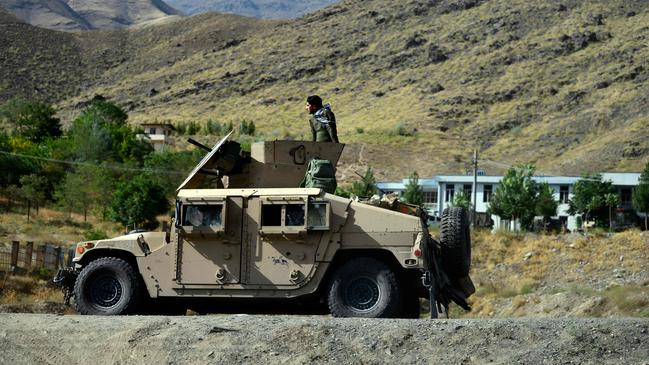Hazara riots mark first sign of resistance
The first seeds of resistance are emerging against Taliban rule with violent clashes breaking out in the eastern city of Jalalabad.

The first seeds of resistance are emerging against Taliban rule in Afghanistan with violent clashes breaking out in the eastern city of Jalalabad after a large crowd of civilians pulled down the group’s Islamic Emirates flag and replaced it with the nation’s red, black and green standard.
At least two people were killed and 12 injured on Wednesday in Jalalabad when Taliban fighters reportedly fired into crowds of protesters as they marched through the main square waving the national flag.
As the Islamic extremists have marched their way across the country in recent weeks and months, their fighters have replaced the national flag with their own banner, angering many local communities. But the clashes in Jalalabad – a trading centre close to the Pakistan border – are among the first signs of civilian opposition to the Taliban since it pushed into Kabul on Sunday and declared victory over the government. Other demonstrations are reported to have erupted in the southeast city of Khost, where pictures showed hundreds of people marching through the streets.
In central Bamiyan, the home to the mostly Shia Hazara ethnic tribe, Taliban fighters have also provoked community anger after blowing up the statue of Abdul Ali Mazari, a leader who fought against the Taliban during Afghanistan’s civil war in the 1990s. As pictures of the destroyed statue circulated on social media on Wednesday, some drew comparisons to the Taliban’s destruction of the sixth-century Buddhas of Bamiyan, a UNESCO-listed national treasure, in March 2001.
Mazari, a champion of Afghanistan’s ethnic Hazara minority, was killed by the Taliban in 1996, when the armed group seized power from rival militias.
On Tuesday night Amrullah Saleh, first vice-president of the toppled government, declared he was still in the country and the “legitimate caretaker president” in the absence of president Ashraf Ghani, who fled the country on Sunday as the Taliban advanced on the city. Some reports suggest Mr Ghani is now in Dubai.
“As per d constitution of Afg, in absence, escape, resignation or death of the President the FVP becomes the caretaker President. I am currently inside my country & am the legitimate care taker President. Am reaching out to all leaders to secure their support & consensus,” Mr Saleh tweeted.
The former vice-president is rumoured to be building a resistance movement from the Panjshir Valley, the heartland of anti-Taliban resistance near the Hindu Kush. In recent days pictures have surfaced on social media showing Mr Saleh, a former head of the National Security Directorate, in Panjshir with the son of his former mentor and famed anti-Taliban fighter Ahmed Shah Massoud, who commands a militia force.
Anti-Taliban sentiment remains strong in the province with one resident telling Agence France-Presse: “We will not allow the Taliban to enter Panjshir and will resist with all our might and power, and fight them.”
William Maley, an Afghan expert and emeritus professor at the Australian National University, said it would likely take time for an organised resistance to emerge, and the “only people who might be capable of that are Amrullah Saleh and Ahmad Massoud in Panjshir”.
“Much more likely is there will be some kind of flash mob protest against some things the Taliban are doing. You could get some itchy Taliban who will fire off some shots and something could escalate from there. That could be very dangerous and also spread.”
Professor Maley said the destruction of the Mazari statue had “raised the temperature” in another pocket of strong anti-Taliban sentiment. “That kind of event is deeply symbolic and I think it rapidly does away with any sense that the Taliban are going to be gentle. I suspect there are still a lot of arms in the Hazara camp. There can be strength in numbers if the Taliban end up provoking some sort of incident.”




To join the conversation, please log in. Don't have an account? Register
Join the conversation, you are commenting as Logout